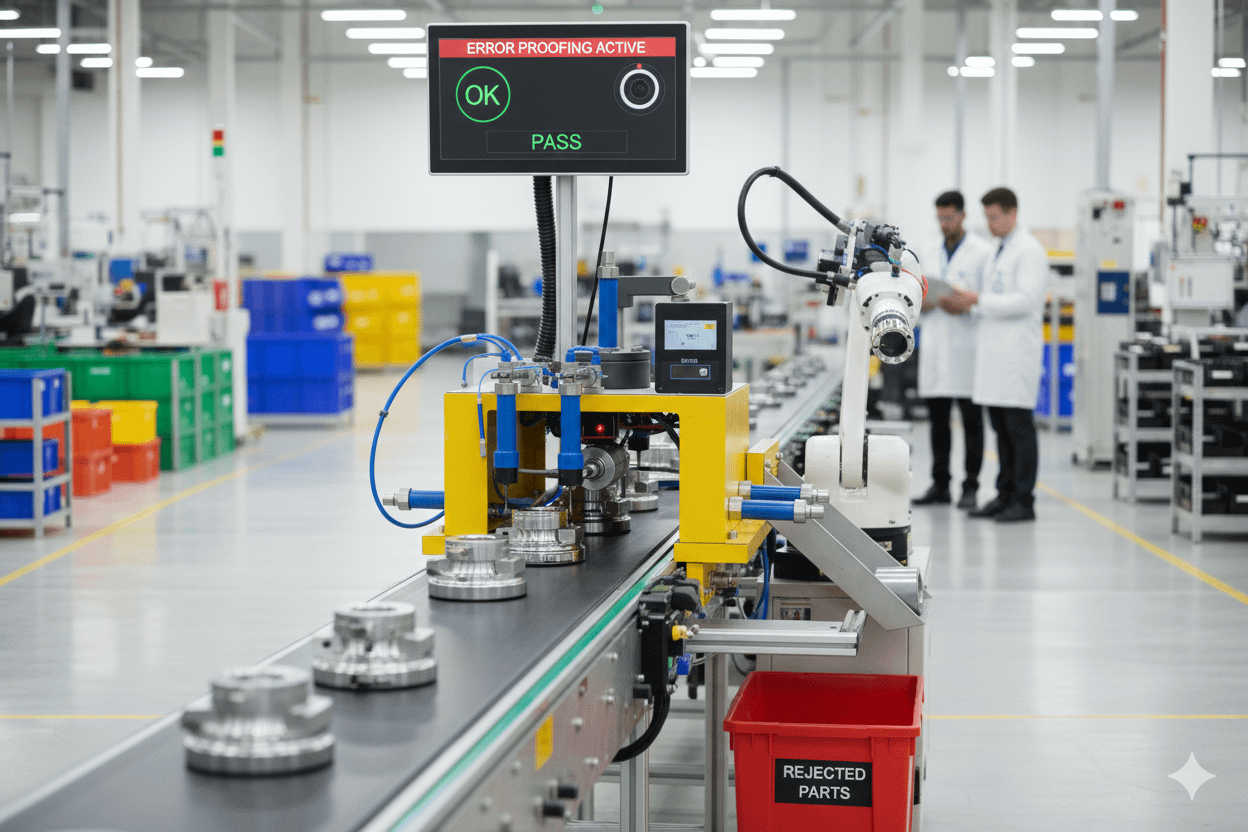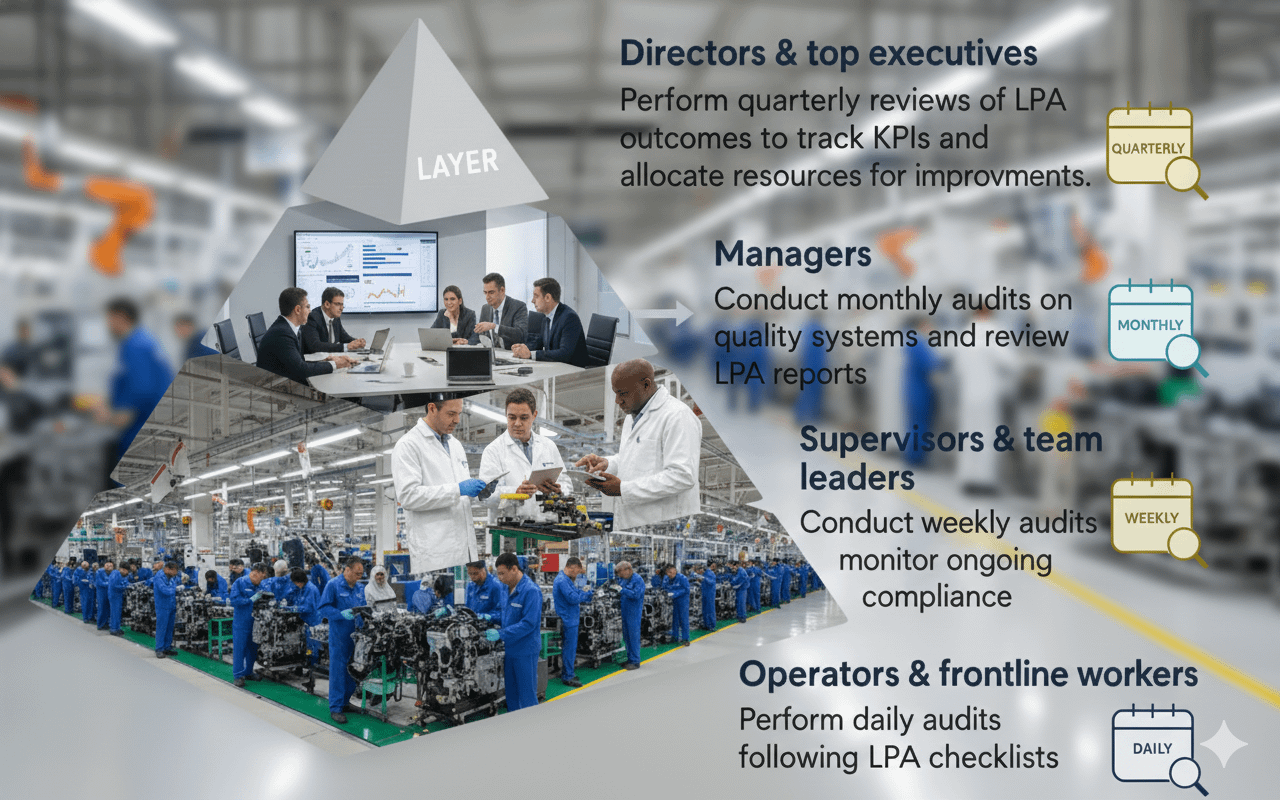
Error Proofing & Detection Verification in Automotive Manufacturing
🧭 Introduction
Error Proofing and Detection Verification are essential quality assurance practices in automotive manufacturing. These systems prevent or detect defects before they reach the next process or the customer. The Error Proofing and Detection Verification standard from organization outlines the requirements for verifying that error proofing and detection devices are functioning correctly. This guide integrates OEM expectations, industry standards (AIAG, VDA), and IATF 16949 to help suppliers implement a compliant and effective verification process.
🎯 Purpose
To ensure that error proofing and detection devices:
- Function as intended
- Prevent or detect non-conforming products
- Are verified regularly and documented
- Are integrated into process control and standardized work
🌍 Scope
This standard applies to:
- All organization manufacturing and assembly sites
- All error proofing and detection devices, including:
- Variable and attribute gages
- End-of-line tests
- Leak tests
- Interlocks and sensors
👥 Roles & Responsibilities
| Activity | Responsible | Support |
|---|---|---|
| Infrastructure & resources | General Manager | — |
| Define implementation and verification process | Manufacturing Engineering Manager | Cross-functional team |
| Execute and document verification | Production Operations Team | Manufacturing Engineering, Quality Team |
📋 Core Requirements
✅ Documentation & Training
- A documented verification procedure must exist.
- Employees must be trained, with records maintained.
🧪 Master Design & Calibration
- Masters must represent the most restrictive condition per part print.
- Must verify all failure modes (e.g., missing, upside-down, not seated).
- Multiple masters may be required.
- Masters must be:
- Calibrated
- Clearly identified (painted, tagged, etc.)
- Protected from damage or misuse
🔁 Verification Frequency
- Once per shift, at minimum
- After line/model changeover
- After process changes
- Before production release, devices must be validated via trial run
- Approved by Manufacturing Engineering, Operations, and Quality
📌 Integration with Quality Systems
- Verification method must be defined in the Process Control Plan (PCP)
- Standardized Work must include verification as periodic work
- Operators must have documented steps for verification
- Devices must be interlocked to stop processing of rejected parts
- Reaction plans must include device failures/malfunctions
🚨 Bypass & Deviation Handling
- Bypassing a device requires an approved process deviation
- Deviation must include a temporary quality gate
- Inspection frequency must match normal process
📊 Device Tracking & Management
Manufacturing Engineering must maintain a master list including:
- Device and master ID numbers
- Location (department and operation number)
- Description of each device
- Storage method to prevent wear, contamination, or misuse
📎 Example Templates:
Verification Log
Verification Results
🔗 Integration with Global Standards
✅ GM & Ford Requirements
- GM: Requires error proofing validation, interlocks, and CQI-20 compliance
- Ford: Emphasizes error detection traceability, launch readiness, and Q1 audit compliance
✅ AIAG & VDA
- AIAG: Supports APQP, Control Plan, and FMEA linkage
- VDA 6.3: Requires error proofing verification, device traceability, and audit readiness
✅ IATF 16949
- Requires:
- Documented device verification
- Integration with process control
- Calibration and traceability
- Risk-based validation and escalation
📂 Record Keeping
- Maintain records per local plant procedures, including:
- Verification logs
- Calibration records
- Deviation approvals
- Trial run documentation
📚 Definitions
| Term | Definition |
|---|---|
| Error Proofing | Design that prevents defects from occurring |
| Error Detection | Method/device that identifies defects after they occur |
| Gage | Device that determines if a part feature is within limits |
| Master | Reference part used to verify device functionality |
✅ Summary
Implementing a robust Error Proofing and Detection Verification system helps suppliers:
- Prevent defective products from progressing
- Improve process reliability and traceability
- Meet global OEM and industry standards
- Support continuous improvement and audit compliance
📌 Beginner Tip: Think of error proofing as your “quality firewall”—it blocks defects before they spread.


